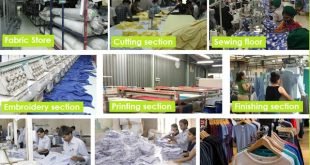It is a very salient virtue to learn the art of preservation. It is not enough to own a thing, preserving it and the tending is what actually aids the durability of our properties. When children attires or wears are concerned, under estimating the preservation methods of their attires could suggest and produce a nasty result or what look when they wear it.
To this effect, government agencies and brands that produce attires have established very shirt preservation methods to be sure that attires produced and marketed for children are free from defaults. In this piece, we will share those preservation methods that children’s clothes must meet up with to ensure they are well preserved and reliable for wearing.
Amongst the age ranges available for attires, it is more accurate to suggest that kids below 4 years are the most insecure when the nature of attire available for their wearing is taken into consideration. A call to brands that produce attires is that they should make it their duty to preserve the attires with regards to quality in production too. This prompts the establishment of various formats for designing attires and parts to be fastened to it.
Well, these formats and data created are at the mercies of the designers and traders to execute when carrying out their designing jobs, in other to be up to the established standard. Also, any breach in these rules can attract a legal sanction on the trader, which will indirectly drag the dignity of the brand to the mud.
Kids’ attires usually have varieties of attachments and cuts to enable them look attractive as well as look good on the children. However, children’s lives could be risked in this process through entanglement, ingestion, suffocation, choking etc. below are parts that are fastened to attires with the different preservation methods and the danger they pose.
Possible dangers associated with attachments and cuts or trims and the preservation methods
Buttons
Buttons are knobs or disc that is passed through a loop or (buttonhole), serving as a fastener and also to make attires fashionable. In other to ensure that it is used in kids’ attire, it should be able to endure 70N of exerted force before splitting or breaking. It is also nice to ensure it does not have edges that are piercing to cut down on the danger of injuring the skin through cuts or scratches.
The edges should rather be smooth. Beware of multiple parted buttons because the smaller parts could pose as danger and will pierce the skin. Since the attires here are basically for kiddies, it will be dangerous to make buttons look like foods. This is because children are fascinated by eating and creating a button that looks like food will tempt and compel them to chew and swallow the buttons as food and we all know the health danger it could pose.
Lastly, when creating buttons that are multiple, ensure that they are inserted inside the attire, not outside. Fastening them at the outer part of the attire will make them play with the buttons especially if they are attractive, thus, they could destroy it and the attire while playing with the buttons.

Tassels
This is a ball shaped bunch of plaited or otherwise entangled threads from which at one end protrudes a cord on which the tassel is hung, and which may have loose, dangling threads at the other end.
Tassels are normally decorative elements, and as such one often finds them attached, usually along the button hem to garment. Due to the decorative features and mildness children are often enticed into sucking it.
They should be fastened so well that they won’t easily be worn off by spittle and anything moisture-like. Because children will definitely suck it, it should be created in a way that it should resist wear to prevent disentangling the threads at the loose ends. To ensure durability, it is safer to avoid delicate parts of clothes in attaching it. Places like the ends of the drawstrings, cords or tie with free ends should be avoided because children easily play with those parts of their clothes.

CLOTHING ORNAMENTS
Bows and Labels
If disentanglement of threads is to be prevented, the ends of the attires or clothes should be made impermeable with heats, when clothing ornaments of any sort is concerned. Note that creating labels that are sharp edged could hamper the quality of clothes when exposed to washing or pulling by children.
If you create a label and badge that is coherent or sticks together without being sharp, they become durable. Beware of the estimated length assigned to various ornamental areas.
For example, the loop and hood areas may be 3.9cm in length and 2.4cm but be sure not to exceed 7.5cm when considering the waist region. Always use the 70N force as a yardstick when creating the bows and labels to ensure that they are well fastened with regards to color fastness too.

Spangles, beads and related parts
Spangles are sparkling sequins used for the decoration of ornate clothing. It is a small piece of sparkling metallic material sewn on to garment as decoration. Beads are also similar in function but different in nature. Spangles / sequins and beads should connect well to the attire.
Attaching it is not a big deal but the condition of these components is more relevant. To this end, be sure that they are horizontally placed to ensure safety. It could be manually stitched or knitted but using a machine stitch will achieve a more perfect and advanced results with regards to it being stitched very strong as well as flatness.
Remember to seal it after every ten stitches repeatedly. The stitches should be well crafted out by ester bonds with double thread and knotted ends.
Sequins & Beads
Zippers / zips
There are material sources that are approved which possess qualities when zip components like top stop, slider. Button stop, tape etc are considered. These components have various qualities and it will be unfair to breach them privately without consultations or helps from professionals or dealers before doing personal assembly.
Note also that the 70N force should be considered to avoid the zippers splitting apart. Take care of the surface coating and be cautious of substances which could be dangerous to the surface. There are standards for it and make sure your surface meets up with the requirements.
With children in mind while creating a zipper, consider what type should be best suitable. Choose the auto-look or semi-look zippers over pin-look zippers because it is not acceptable for children wears according to rules.
Ensure that you achieve a smooth edge and component, to allow it stand the test of any form of material degradation agents like washing and pulling. Ensure that the zip guard is between 18- 20mm wide, well fastened across the fly opening to avoid trapping of the penis in a boy’s trousers. Concealed / invisible and indirectly attached zippers are disallowed.

Fastening press and related parts
There are various fasteners that are locked and unlocked with a press. However, whichever ones that are attached to the fabrics, it should be able to endure the pressure from the force pull of 70N.
Examples are rivets, eyelets, hooks and bars, tack buttons etc. they should be moderated in a fashion that kids will not feel uncomfortable when they wear clothes to avoid and red skins on the kids bodies.

Ribbons, cords, bows and strings
All of these are Trims or Cuts. They can be attached to places in body parts such as wrist, ankle, back, waist, neck etc. with each of these parts possessing unforeseen danger. The preservation method splits the kids’ body into groups to ensure that the preservation method becomes flexible.


Group A: Head, Neck and Upper chest
Strings or cords are totally unacceptable in these areas since injuries and strangling are unavoidable if they get hooked by an object. Designers usually place these decorative cords, shoulder slap etc. Avoid loosed ends for drawstrings and use bights for modification.
Also, for loops like this, any time the clothes are opened very wide, there will be no loop shooting out and when the attire is opened just very little, the loop measurement should not exceed 15cm. otherwise, for any functional cord of any sort, the length must not be beyond 7.5cm and should not be stretchable.
Then, ensure that there is no loose end for the shoulder slap when kids wear the clothes, and for fastened decorative cords, the loose ends should not exceed 7.5cm which is exactly same measurement for a normal loop. The best options are to use permanently fixed traps, fastening presses, dips, ring, use buttons as well as sliders.
Group B: Chest and Waist regions
When considering these regions, decorations, decorative cords, functional cords, drawstrings and fabric belts should not exceed 20cm for bottoms and 14cm for tops, for the two ends when the clothe is balanced.
In clothes, decorative cords around the region are waist drawstrings for trousers and jackets. Short out loops with bright are to be carefully examined because they can be entrapped or hooked by an object in the environment and wound the kids involved.
Group C: Pelvis region
Ensure that no drawstring is left dangling below the pelvic region of the attire, and if any, it should be horizontally placed against the fabrics when fastened. Decorative borders or fringes at the lower hem are considered as decorative cords and as such should be avoided.
Groups D: Back region and arms
Totally avoid any sort of drawstrings or functional cord attached at the back of children’ clothes. If they happen to be any, the decorative cords should not exceed 7.5cm length and must not possess knots, bight or any three faced ornament because they can make children very uncomfortable and restless.
Then, it is fine to use cords of any sort exceeding 7.5cm length when sleeves, either long or short is under consideration. Heed to this; attach the drawstrings in a fashion that it will protrude towards the fabric and when placed beneath the elbow, it should not be left hanging underneath the lower hem of the sleeves.
This is for long sleeves. For the short sleeves it is permitted in a case where the sleeve gets exhausted beyond the elbow.
The domestic diva
Stoke blended components
There are varieties of determinants of which stokes or heats performance of fabrics depends on. They are the elasticity of the fabric, fabric texture (mild or rough), fabric finish, uneven surface etc. yet the blending should be lasting enough to endure or resist material degradation.
Stretchy Nature: Some parts of children clothes can really pose as danger if made to be stretchy because makes for restlessness and suffocation. The stretchy texture chosen should align with the garment structure to make for accurate length of the elastic used. It should be moderate. If it is very clumsy, it could warrant discomfort and if too lose, the garment will look unfitting and unattractive.
Velcro: Velcro should be placed in a manner so that the hooks side faces the clothe rather than the skin, to avoid frictional wear off. Also, it should be roundly shaped to reduce the risk of scratching since scratching can cause skin reddening.
Magnets: Children clothes should be free of magnets.
Minor clothe parts that causes choking of magnets
Children’s brains are tabula rasa. They often assume that every object is consumable. To this end, even some small parts in their garments could constitute threats to life as a consumption of these small parts could lead to asphyxiation, strangulation and puringestion. They include:
.Hasps and slider, Belt fastenings, Tassels, Bows and rosettes, Buttons, Bights, Snaps, studs and rivets, Zipper, Decorative labels, Fringes and pompoms.
There is an experimental test for these components that are used to determine how safe or hazardous they could be. Try putting these mini components in a small parts cylinder. If the objects under test fit into the cylinder with no room for external aid, it is seen as a possible strangulation prospect. With regards to this, all these objects should be able to withstand some amount of pull force before they qualify for usage in fabrics making for kids.
Surface beautification in fastened parts and Trims
Part of the guidelines for a successful fabric design for children fabrics is about the surface beautifiers attached to trims and components. Every metallic and non-metallic part such as fastening press, metallic fasteners, stud, buttons, zipper, eyelet, rivet etc should be devoid of any form of harmful elements. These rules vary in countries.
The surface finishing should adhere to the Phthalates and Lead rules in different regions. Lead especially is cancerous and could cause momentary shocks in children when exposed to it. Very salient is that surface coating which should be able to endure material degradation with regards to care label.
Summarily, in essence, material degradation could be in the form of corrosion, oxidations or rusting because these militate against the fashionability, marketability and lasting power of the material in question.
Here is a piece advice. If all these requirements are to be properly followed and actualized, consider seeking materials from legally approved sources or the legitimate ones. Examples are scovill fasteners inc, YKK etc.
Conclusion
Ensure that none of the metal parts used is delectable when placed under the scrutiny of a metal detector.
All the guidelines discussed and shared are established to avert unforeseen risk threats from clothes that kids put on. For a more comprehensive guide, ensure to study documents produced by numerous industrial standards and government consumer product preservation requirements. Note that these requirements are variant dependent on countries.
Conclusively, another purpose behind this piece is to inform the general public of the risks from Parts attached to children’s clothes, so that they can make a good choice next time to decide to buy clothes for the kids.
 Henry Pham (Pham Quang Anh), CEO of DONY Garment
Henry Pham (Pham Quang Anh), CEO of DONY Garment
This year, we have found that many international buyers are seeking new suppliers based in nations outside of China and Thailand to purchase many goods and products, including uniforms, workwear, reusable cloth face mask, and protective clothing.
At DONY Garment, we are proud to welcome international customers, especially those based in the US, Canada, the Middle East, and the EU market to discover the professional production line at our factory in Vietnam.
We guarantee our products are of the highest quality, at an affordable cost, and easy to transport across the world.
 Dony Garment Vietnamese Garment Factory Supplier – Apparel Clothing & Textile Manufactured. Private label clothing Produce women, men, children baby wear – Casual Clothing, Uniform, Workwear
Dony Garment Vietnamese Garment Factory Supplier – Apparel Clothing & Textile Manufactured. Private label clothing Produce women, men, children baby wear – Casual Clothing, Uniform, Workwear







 Henry Pham (Pham Quang Anh), CEO of DONY Garment
Henry Pham (Pham Quang Anh), CEO of DONY Garment



